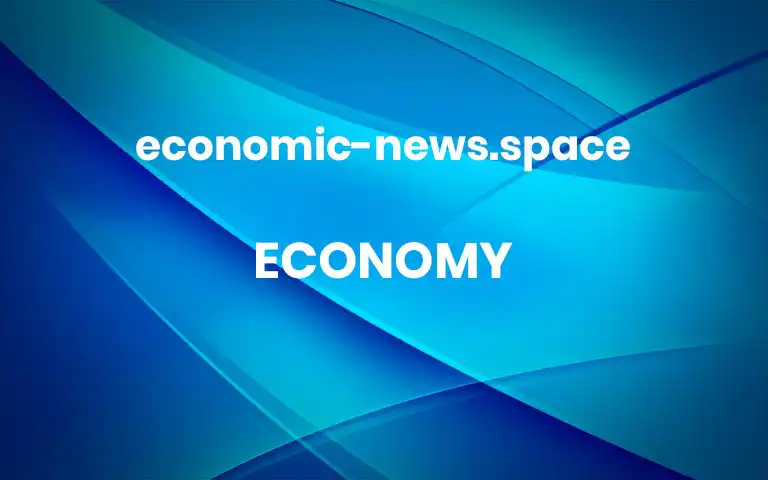Fear of Inflation Finds a Foothold in the Bond Market

There is little evidence for a big jump in prices, but some economists and bond investors fear President Biden’s policies could lead to inflation.The so-called bond vigilantes may be back, 30 years after they led a sell-off in Treasury securities over the prospect of higher government spending by a new Democratic administration.The Federal Reserve has downplayed the risk of inflation, and many experts discount the danger of a sustained rise in prices. But there is an intense debate underway on Wall Street about the prospects for higher inflation and rising interest rates.Yields on 10-year Treasury notes have risen sharply in recent weeks, a sign that traders are taking the inflation threat more seriously. If the trend continues, it will put bond investors on a collision course with the Biden administration, which recently won passage of a $1.9 trillion stimulus bill and wants to spend trillions more on infrastructure, education and other programs.The potential confrontation made some market veterans recall the 1990s, when yields on Treasury securities lurched higher as the Clinton administration considered plans to increase spending. As a result, officials soon turned to deficit reduction as a priority.Ed Yardeni, an independent economist, coined the term bond vigilante in the 1980s to describe investors who sell bonds amid signs that fiscal deficits are getting out of hand, especially if central bankers and others don’t act as a counterweight.As bond prices fall and yields rise, borrowing becomes more expensive, which can force lawmakers to spend less.“They seem to mount up and form a posse every time inflation is making a comeback,” Mr. Yardeni said. “Clearly, they’re back in the U.S. So while it’s fine for the Fed to argue inflation will be transitory, the bond vigilantes won’t believe it till they see it.”Yields on the 10-year Treasury note hit 1.75 percent last week before falling back this week, a sharp rise from less than 1 percent at the start of the year.Not all the sellers necessarily oppose more government spending — some are simply acting on a belief that yields will move higher as economic activity picks up, or jumping on a popular trade. But the effect is the same, pushing yields higher as prices for bonds fall.Yields remain incredibly low by historical standards and even recent trading. Two years ago, the 10-year Treasury paid 2.5 percent — many bond investors would happily welcome a return to those yields given that a government note bought today pays a relative pittance in interest. And during the Clinton administration, yields on 10-year Treasurys rose to 8 percent, from 5.2 percent between October 1993 and November 1994.Still, Mr. Yardeni believes the bond market is saying something policymakers today ought to pay attention to.“The ultimate goal of the bond vigilante is to be heard, and they are blowing the whistle,” he said. “It could come back to bite Biden’s plans.”Yet evidence of inflation remains elusive. Consumer prices, excluding the volatile food and energy sectors, have been tame, as have wages. And even before the pandemic, unemployment plumbed lows not seen in decades without stoking inflation.Indeed, the bond vigilantes remain outliers. Even many economists at financial firms who expect faster growth as a result of the stimulus package are not ready to predict inflation’s return.“The inflation dynamic is not the same as it was in the past,” said Carl Tannenbaum, chief economist at Northern Trust in Chicago. “Globalization, technology and e-commerce all make it harder for firms to increase prices.”What’s more, with more than nine million jobs lost in the past year and an unemployment rate of 6.2 percent, it would seem there is plenty of slack in the economy.That’s how Alan S. Blinder, a Princeton economist who was an economic adviser to President Bill Clinton and is a former top Fed official, sees it. Even if inflation goes up slightly, Mr. Blinder believes the Fed’s target for inflation, set at 2 percent, is appropriate.“Bond traders are an excitable lot, and they go to extremes,” he said. “If they are true to form, they will overreact.”Indeed, there have been rumors of the bond vigilantes’ return before, like in 2009 as the economy began to creep out of the deep hole of the last recession and rates inched higher. But in the ensuing decade, both yields and inflation remained muted. If anything, deflation was a greater concern than rising prices.It is not just bond traders who are concerned. Some of Mr. Blinder’s colleagues from the Clinton administration are warning that the conventional economic wisdom hasn’t fully accepted the possibility of higher rates or an uptick in prices..css-yoay6m{margin:0 auto 5px;font-family:nyt-franklin,helvetica,arial,sans-serif;font-weight:700;font-size:1.125rem;line-height:1.3125rem;color:#121212;}@media (min-width:740px){.css-yoay6m{font-size:1.25rem;line-height:1.4375rem;}}.css-1dg6kl4{margin-top:5px;margin-bottom:15px;}.css-k59gj9{display:-webkit-box;display:-webkit-flex;display:-ms-flexbox;display:flex;-webkit-flex-direction:column;-ms-flex-direction:column;flex-direction:column;width:100%;}.css-1e2usoh{font-family:inherit;display:-webkit-box;display:-webkit-flex;display:-ms-flexbox;display:flex;-webkit-box-pack:justify;-webkit-justify-content:space-between;-ms-flex-pack:justify;justify-content:space-between;border-top:1px solid #ccc;padding:10px 0px 10px 0px;background-color:#fff;}.css-1jz6h6z{font-family:inherit;font-weight:bold;font-size:1rem;line-height:1.5rem;text-align:left;}.css-1t412wb{box-sizing:border-box;margin:8px 15px 0px 15px;cursor:pointer;}.css-hhzar2{-webkit-transition:-webkit-transform ease 0.5s;-webkit-transition:transform ease 0.5s;transition:transform ease 0.5s;}.css-t54hv4{-webkit-transform:rotate(180deg);-ms-transform:rotate(180deg);transform:rotate(180deg);}.css-1r2j9qz{-webkit-transform:rotate(0deg);-ms-transform:rotate(0deg);transform:rotate(0deg);}.css-e1ipqs{font-size:1rem;line-height:1.5rem;padding:0px 30px 0px 0px;}.css-e1ipqs a{color:#326891;-webkit-text-decoration:underline;text-decoration:underline;}.css-e1ipqs a:hover{-webkit-text-decoration:none;text-decoration:none;}.css-1o76pdf{visibility:show;height:100%;padding-bottom:20px;}.css-1sw9s96{visibility:hidden;height:0px;}#masthead-bar-one{display:none;}#masthead-bar-one{display:none;}.css-1cz6wm{background-color:white;border:1px solid #e2e2e2;width:calc(100% – 40px);max-width:600px;margin:1.5rem auto 1.9rem;padding:15px;box-sizing:border-box;font-family:’nyt-franklin’,arial,helvetica,sans-serif;text-align:left;}@media (min-width:740px){.css-1cz6wm{padding:20px;width:100%;}}.css-1cz6wm:focus{outline:1px solid #e2e2e2;}#NYT_BELOW_MAIN_CONTENT_REGION .css-1cz6wm{border:none;padding:20px 0 0;border-top:1px solid #121212;}Frequently Asked Questions About the New Stimulus PackageThe stimulus payments would be $1,400 for most recipients. Those who are eligible would also receive an identical payment for each of their children. To qualify for the full $1,400, a single person would need an adjusted gross income of $75,000 or below. For heads of household, adjusted gross income would need to be $112,500 or below, and for married couples filing jointly that number would need to be $150,000 or below. To be eligible for a payment, a person must have a Social Security number. Read more. Buying insurance through the government program known as COBRA would temporarily become a lot cheaper. COBRA, for the Consolidated Omnibus Budget Reconciliation Act, generally lets someone who loses a job buy coverage via the former employer. But it’s expensive: Under normal circumstances, a person may have to pay at least 102 percent of the cost of the premium. Under the relief bill, the government would pay the entire COBRA premium from April 1 through Sept. 30. A person who qualified for new, employer-based health insurance someplace else before Sept. 30 would lose eligibility for the no-cost coverage. And someone who left a job voluntarily would not be eligible, either. Read moreThis credit, which helps working families offset the cost of care for children under 13 and other dependents, would be significantly expanded for a single year. More people would be eligible, and many recipients would get a bigger break. The bill would also make the credit fully refundable, which means you could collect the money as a refund even if your tax bill was zero. “That will be helpful to people at the lower end” of the income scale, said Mark Luscombe, principal federal tax analyst at Wolters Kluwer Tax & Accounting. Read more.There would be a big one for people who already have debt. You wouldn’t have to pay income taxes on forgiven debt if you qualify for loan forgiveness or cancellation — for example, if you’ve been in an income-driven repayment plan for the requisite number of years, if your school defrauded you or if Congress or the president wipes away $10,000 of debt for large numbers of people. This would be the case for debt forgiven between Jan. 1, 2021, and the end of 2025. Read more.The bill would provide billions of dollars in rental and utility assistance to people who are struggling and in danger of being evicted from their homes. About $27 billion would go toward emergency rental assistance. The vast majority of it would replenish the so-called Coronavirus Relief Fund, created by the CARES Act and distributed through state, local and tribal governments, according to the National Low Income Housing Coalition. That’s on top of the $25 billion in assistance provided by the relief package passed in December. To receive financial assistance — which could be used for rent, utilities and other housing expenses — households would have to meet several conditions. Household income could not exceed 80 percent of the area median income, at least one household member must be at risk of homelessness or housing instability, and individuals would have to qualify for unemployment benefits or have experienced financial hardship (directly or indirectly) because of the pandemic. Assistance could be provided for up to 18 months, according to the National Low Income Housing Coalition. Lower-income families that have been unemployed for three months or more would be given priority for assistance. Read more.Robert E. Rubin, Mr. Clinton’s second Treasury secretary, echoed that concern but took pains to support the stimulus package.“There is a deep uncertainty,” Mr. Rubin said in an interview. “We needed this relief bill, and it served a lot of useful purposes. But we now have an enormous amount of stimulus, and the risks of inflation have increased materially.”Mr. Rubin acknowledged that predicting inflation was very difficult, but he said policymakers ought to be ready to fight it. “If inflationary pressures do take off, it’s important to get ahead of them quickly before they take on a life of their own.”The Federal Reserve has plenty of options. Not only is it buying up debt, which keeps yields down, but the Fed chair, Jerome H. Powell, has called for keeping monetary policy relatively loose for the foreseeable future. If higher prices do materialize, the Fed could halt asset purchases and raise rates sooner.“We’re committed to giving the economy the support that it needs to return as quickly as possible to a state of maximum employment and price stability,” Mr. Powell said at a news conference last week. That help will continue “for as long as it takes.”While most policymakers expect faster growth, falling unemployment and a rise in inflation to above 2 percent, they nonetheless expect short-term rates to stay near zero through 2023.But the Fed’s ability to control longer-term rates is more limited, said Steven Rattner, a veteran Wall Street banker and former New York Times reporter who served in the Obama administration.“At some point, if this economy takes off bigger than any one of us expect, the Fed will have to raise rates, but it’s not this year’s issue and probably not next year’s issue,” he said. “But we are in uncharted waters, and we are to some extent playing with fire.”The concerns about inflation expressed by Mr. Rattner, Mr. Rubin and others has at least a little to do with a generational angst, Mr. Rattner, 68, points out. They all vividly remember the soaring inflation of the 1970s and early 1980s that prompted the Fed to raise rates into the double digits under the leadership of Paul Volcker.The tightening brought inflation under control but caused a deep economic downturn.“People my age remember well the late 1970s and 1980s,” Mr. Rattner said. “I was there, I covered it for The Times, and lived through it. Younger people treat it like it was the Civil War.”Some younger economists, like Gregory Daco of Oxford Economics, who is 36, think these veterans of past inflation scares are indeed fighting old wars. Any rise in inflation above 2 percent is likely to be transitory, Mr. Daco said. Bond yields are up, but they are only returning to normal after the distortions caused by the pandemic.“If you have memories of high inflation and low growth in the 1970s, you may be more concerned with it popping up now,” he said. “But these are very different circumstances today.” More



